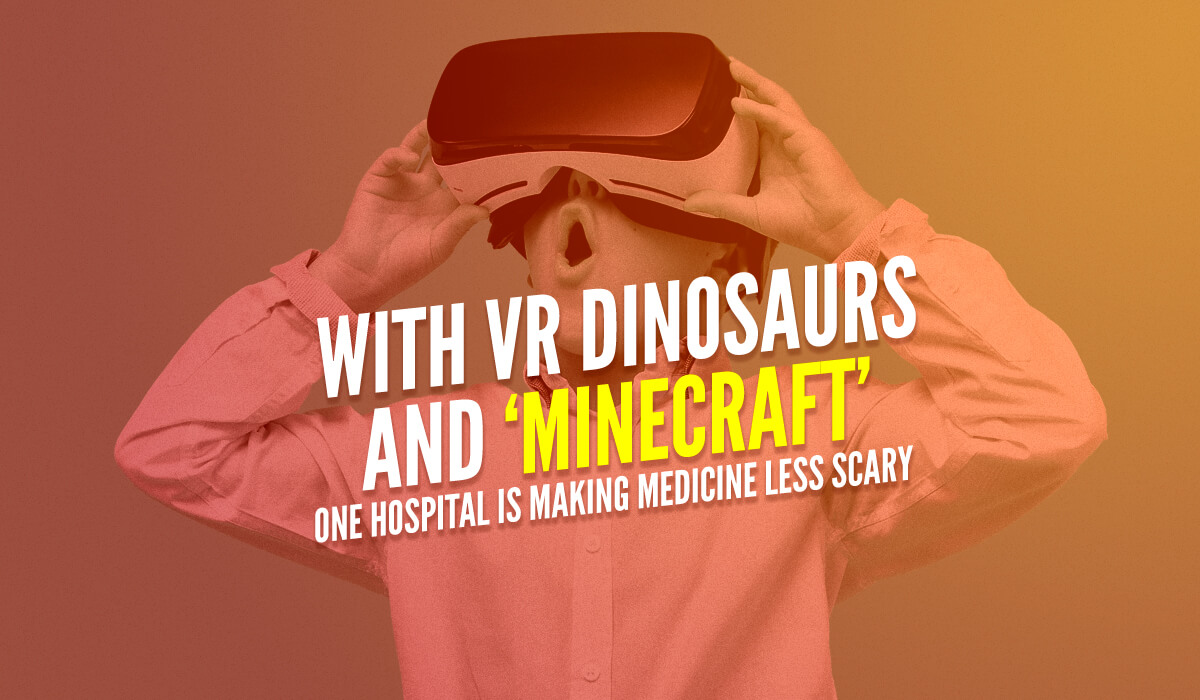สำหรับเด็กๆ การมาโรงพยาบาลอาจไม่ใช่สถานที่ที่มอบความสุขให้มากนัก หลายคนอาจเคยมีประสบการณ์กลัวเข็มฉีดยาและการรักษาในรูปแบบต่างๆ แต่จากความร่วมมือของศูนย์บริการสุขภาพแห่งชาติของอังกฤษ มหาวิทยาลัยคอลเลจลอนดอน ไมโครซอฟท์ ซัมซุง และอาร์ม (Arm) ผู้ผลิตชิปเซมิคอนดักเตอร์ กำลังจะทำให้โรงพยาบาลเกรทออร์มอนด์สตรีทกลายเป็นสวนสนุกที่เต็มไปด้วยของเล่น แถมยังไฮเทคด้วย
With VR dinosaurs and ‘Minecraft’ one hospital is making medicine less scary
20 October 2018 Uncategorized
Going to the hospital can be pretty traumatic for kids. That’s something a new high tech overhaul of one of the world’s most famous children’s hospitals hopes to help with. How is it doing this? With cutting-edge technology, of course.
The result of a collaboration between the U.K.’s National Health Service, University College London, Microsoft, Samsung, and chipmaker Arm, London’s Great Ormond Street Hospital is becoming a veritable Disneyland of cool gadgetry. Who knows? Soon your kids may be begging to go to the hospital to get their tonsils out!
Called DRIVE (Digital, Research, Informatics, and Virtual Environments), the initiative is designed to explore how new technologies can help with the medical treatment of young kids. What makes the project especially innovative is the breadth of its ambitions — which frequently include technologies you might not expect to find in a hospital. For example, kids using an augmented reality app to look around will see a big blue whale and hopping rabbits moving around the building.
There’s also a research project designed to examine whether a dinosaur-themed VR experience can help keep children’s minds occupied while they are being treated, as well as a gamification platform which lets patients control video games by doing chest physiotherapy exercises. Not enough? Heck, there’s even a painstaking replica of the entire hospital, built in Minecraft, so that kids can look around it to make the whole experience less daunting.
“The DRIVE unit is a way of bringing together clinical staff, academics from computer science, and technology industry partners to work on common projects and provide a common space to bring these to life,” Neil Sebire, a Consultant Pediatric Pathologist at GOSH, told Digital Trends. “In addition, the DRIVE unit itself acts as a healthcare ‘sandpit’ or ‘living lab’ in which to develop and evaluate new technology for potential healthcare use before bringing this into the real world clinical environment.”
Given Great Ormond Street’s reputation for pioneering research, hopefully it won’t be long before similar technologies — once their efficacy is proven — roll out to other hospitals around the world. And, hey, let’s get a few grown-up hospitals in there, too. That dino VR simulation sounds pretty good to this 33-year-old!
Reference: DigitalTrend

